The Planet has grown to more than 10,000 subscribers, and many of you are also familiar with my other Substack publications. However, only a handful of you are aware of my writing on Patreon, where I maintain a much smaller and more personal community of just about 20 supporters.
Unlike The Planet, where I rarely use paywalls, my Patreon posts are often behind a paywall to create that "just us" space. My writing there is different: more personal reflections, fewer words but more photographs, focusing on my travel impressions and memories rather than politics and other serious topics. It's where a small group of readers comes to hear more from me personally and offers extra support for the work.
Since I'm not writing a full newsletter today, I thought I'd share my latest Patreon piece with all of you here. It's from a few days ago, written from one of my favorite peaceful spots on the island where I live. Consider it a glimpse into the other side: quieter, more introspective, focused on place and memory, or the beauty of what I encounter in nature or art, rather than the day's urgent news.
If this resonates with you, you're welcome to join that smaller community on Patreon. For now, though, here's what I shared earlier this week:
I'm sitting at the spot where most visitors to my island first glimpse the North Sea; a high dune in Westenschouwen with wooden planks, a few benches, and now hundreds of small memorial plaques scattered across every available surface. The sunset tonight disappointed me; usually this season delivers spectacular orange skies, but today offers only a thin layer of washed-out orange hues on the horizon.
Years ago, when I was still working as a diplomat, our Ministry published an internal magazine, one of those publications that eventually fell victim to budget cuts, as many of them do. I recall reading an article in which veteran ambassadors were asked to name the most beautiful spot in the world. The responses painted a picture you'd expect: hilltops in Vietnam with magnificent views, walking trails through Peru, farms in South Africa with sweeping vistas.
Only one ambassador mentioned the dunes on Schiermonnikoog, a Dutch island.
That contrast fascinated me. All these people representing our country across the globe, and only one claimed that the most beautiful place lies close to home. I understood that answer completely. If asked the same question, I'd point to a spot here on the west side of my island, though not this popular overlook where I'm sitting now.
This place draws crowds because it's accessible. You can drive here, climb the concrete stairs over the dunes, and suddenly see the North Sea stretching to the horizon. For many visitors, this marks their first moment seeing the sea on the west side of the island. The view explains its popularity: standing high on the dune, overlooking the water, watching sunsets paint the sky.
But popularity changes places. When I first started coming here—practically all my life—these wooden planks held no memorial plaques. Perhaps five or ten years ago, someone placed the first small plaque in memory of a loved one who cherished this spot. Now they're everywhere. Easily a hundred, possibly two hundred small memorials covering every surface. Most honor family members, though I've spotted a few dedicated to dogs who apparently also loved this view.
While I've been taking photos and making these notes, a family of seven arrived, tourists by their appearance, probably here for a holiday week. They're digging sand away from one of the memorial plaques with their bare hands. The dunes constantly shift, so the plaque they placed months or years ago has been buried. One by one, they take turns excavating until they can read their memorial again.
Just a few hundred meters from where I sit, beneath the water, lie the remains of the old harbor and part of the original village of Westenschouwen. Archaeological evidence suggests that this village flourished between 1300 and 1500, with most artifacts, including metal objects, ceramics, and fishing net weights, dating to the second half of the 15th century, when the village reached its economic peak. Tree ring analysis has even pinpointed specific house and farm structures to around 1450-1470. It is just one of many villages this island has lost to the sea over the centuries. Present-day Westenschouwe sits safely inland, protected by the dunes.
My favorite spot lies further north, too far for most people because you can't drive there. You must cycle first, then walk through the forest and dunes before reaching a nearly deserted beach. Even during peak tourist season, few people make that journey. I love swimming there in early mornings, alone in the water, looking back at the island's high dunes.
That area fascinates me precisely because it never stays the same. The dunes move constantly, so what I see this year will look quite different next year from the same position. It's not a single fixed spot, but a relationship with a landscape that continually reshapes itself.
What you probably can't see clearly in tonight's photos is a sight that divides opinion here: dozens of wind turbines now dot the sea where the orange sunlight meets the horizon. Some people complain about these additions to our seascape. I actually like them. They show we're taking our energy transition commitments seriously, that we're building the future we need rather than just talking about it.
This island has always lived with change; villages swallowed by the sea, dunes migrating with wind and tide, new memorials appearing on wooden planks, wind turbines rising from the water. The landscape never holds still and is thus never finished. Maybe that's what I love most about it.
The family has finished digging out their memorial plaque. They're standing together now, seven people and a dog, reading whatever message they left here for someone who once shared this view with them. The dunes will cover it again, and they'll return someday to dig it out once more.
We're approaching the hour of sunset and, as usual, more people climb up the stairs to watch the beauty of nature on the horizon. Some loudly share their opinion about the sun's watery performance, as if the fireworks they bought don't deliver the promised sparkle. I feel out of place as the only one writing while everyone else is photographing that disappointing sunset. Many others did so before them, some of their names now attached to the weathered wood of this lookout point.
On July 30, I wrote:
What Every European Knows About Healthcare That Trump's America Refuses to Learn
Sixty years ago today, Lyndon Johnson signed the law that created Medicare and Medicaid. He did it in Independence, Missouri, with Harry Truman watching, making the 81-year-old former president the first Medicare beneficiary. Johnson believed seniors shouldn’t have to choose between seeing a doctor and paying rent.





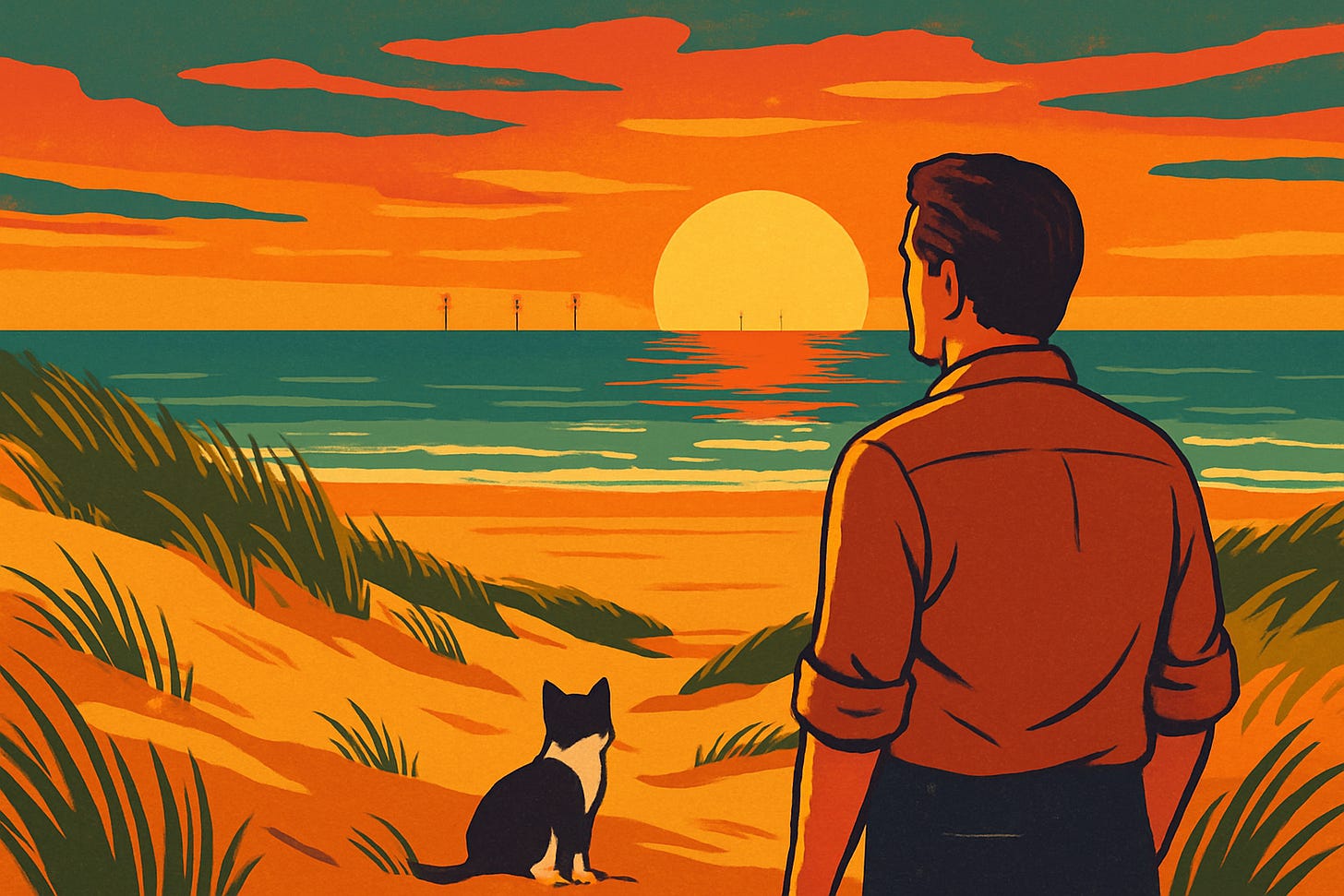
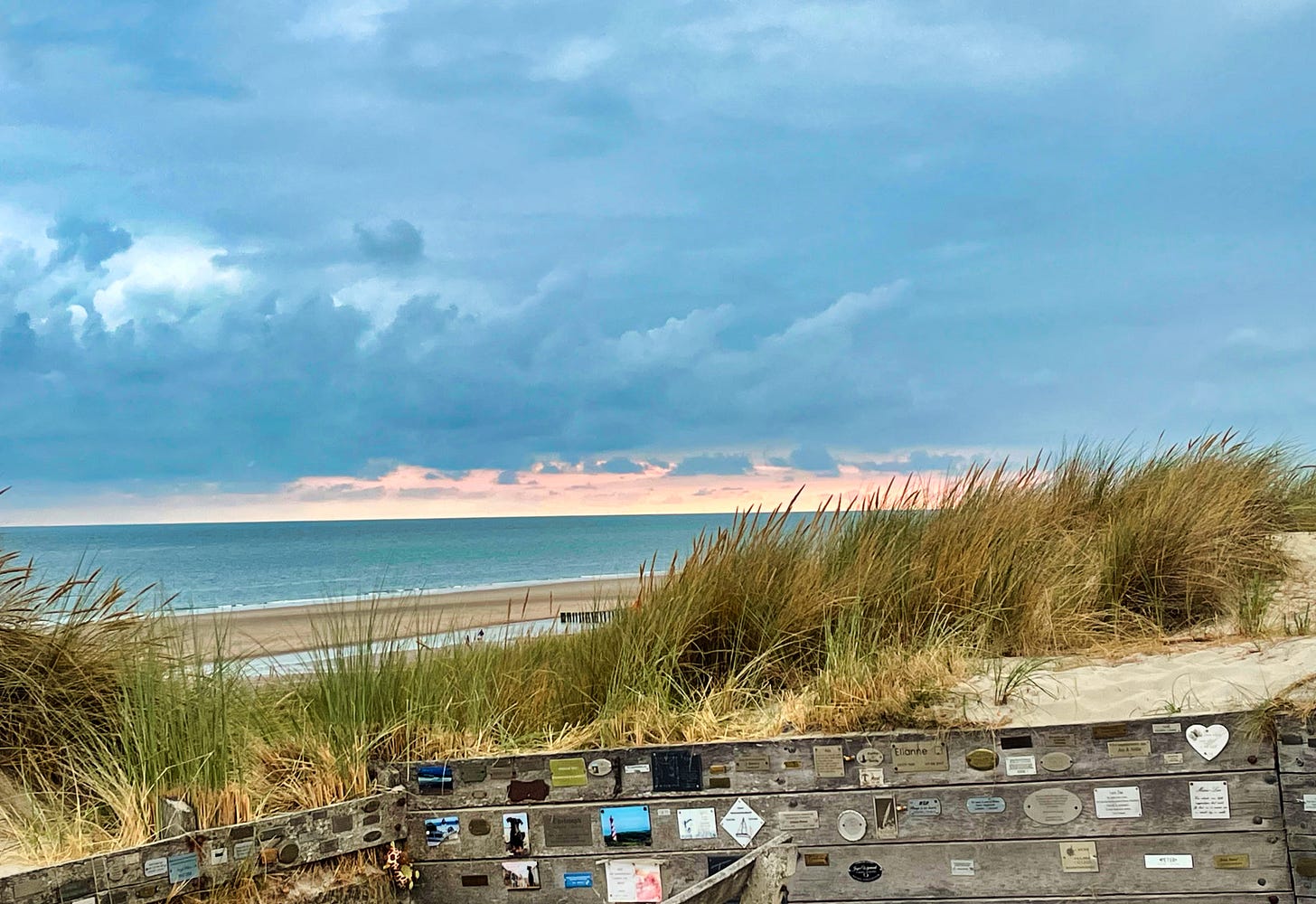
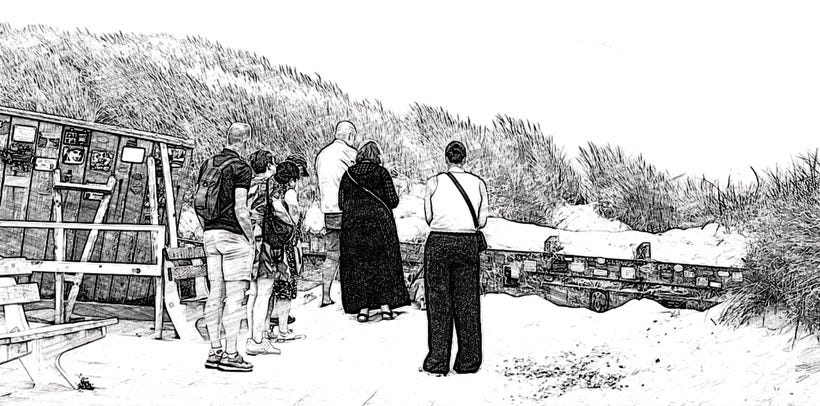
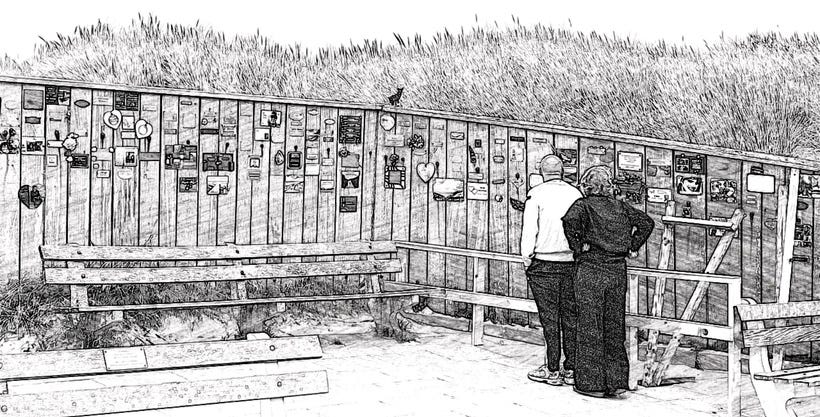
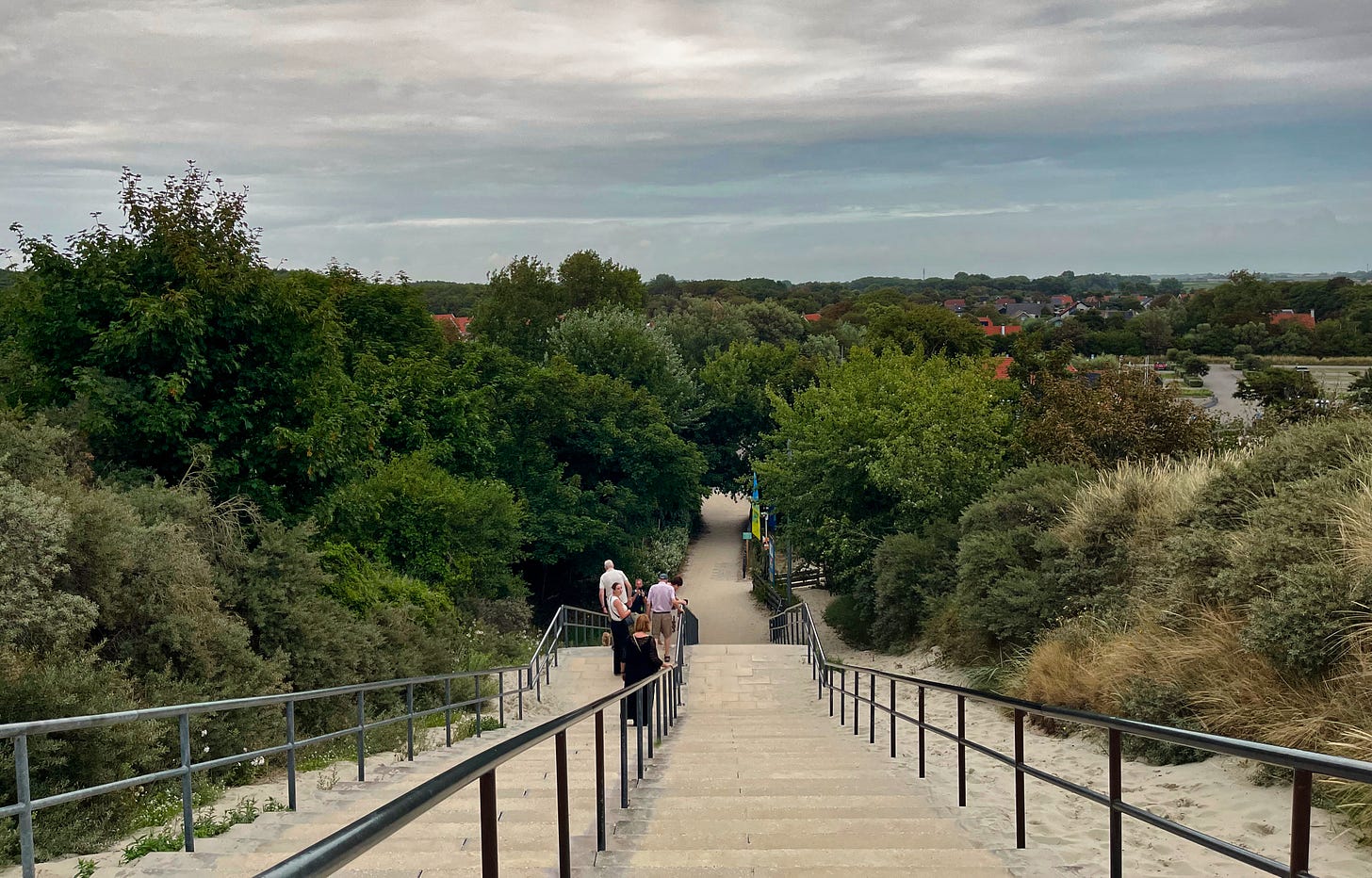
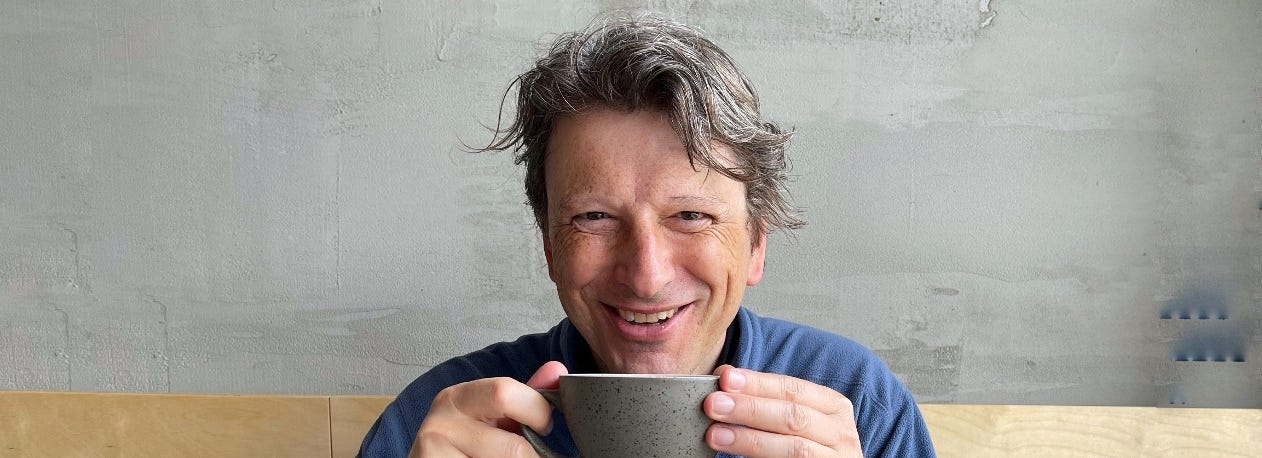

Thank you for sharing the "just us" part of your writing life and giving others a glimpse of Patreon. It may be my favorite platform because of the many images you post. Thinking fondly of the 10:00 am impressions during your two Camino walks. I loved living in Groningen but will have to visit south one day. And you know, this sunset may have been disappointing but guaranteed the next will be stunning 🌅
Thank you, I loved it again!
A beautiful tribute to a wonderful place you call home.
Through the years I have grown to love it too and look forward to anything you share a from your ‘paradise’.
It’s always special 🇳🇱